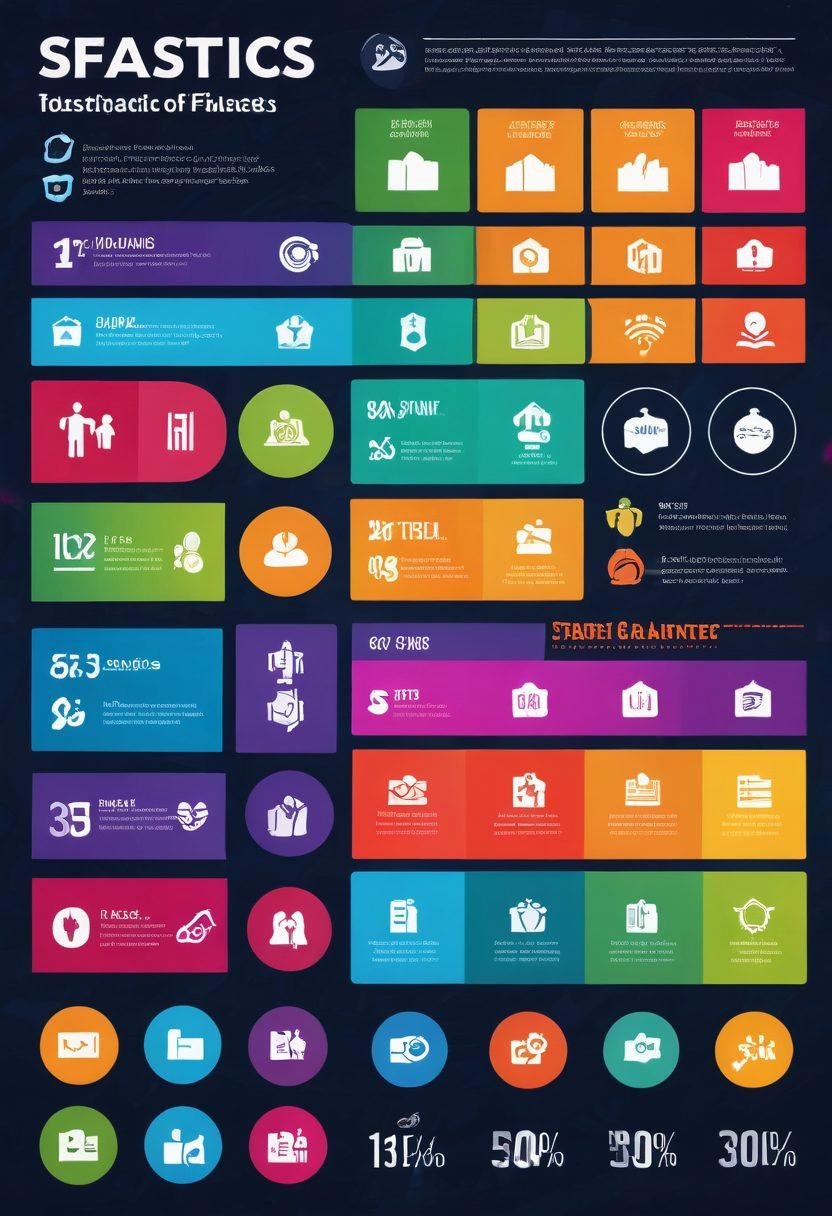Unlocking Joy: Transforming Data into Dynamic and User-Friendly Visuals
In the ever-evolving world of information, we often find ourselves drowning in a sea of numbers, statistics, and seemingly endless data sets. But what if I told you that amidst this ocean of quantitative data lies a treasure trove of joy? That's right! By harnessing the power of data visualization, we have the potential to transform mundane statistics into dynamic and user-friendly charts that not only inform but also delight. Imagine a world where data interpretation becomes an engaging experience rather than a chore—this is the joy of effective infographic design. It's time to unlock the secrets of joyful experiences through visual representations!
Think about the last time you were presented with a complex report filled with endless rows of figures. Did your eyes glaze over, or did you find a way to make sense of it all? The challenge lies not just in the data itself, but in how we convey that information. The ability to create user-friendly charts and sophisticated graphical representations is essential for effective data analysis. When we take a step back from the raw numbers and focus on dynamic visualizations, we can weave stories that connect with our audience on an emotional level. After all, isn't it more pleasing to see information graphics that resonate than to struggle with columns of numbers?
Let’s dive deeper into the impact of effective graph design. When done right, analytic graphs can illustrate data-driven insights that are both powerful and memorable. People are conditioned to respond to visuals far quicker than text, making pictorial data representation an essential tool for any communicative endeavor. Picture this: a beautifully designed infographic that distills complex data into bite-sized pieces, allowing the viewer to see patterns and relationships that might be obscured by traditional data formats. How much easier would it be to understand trends when they are elegantly visualized?
Speaking of elegance, consider the craft of creating infographics. Infographic design is not just about making something look pretty; it’s about enhancing clarity and understanding. It's an art form that requires a careful balance of aesthetics and functionality. By employing statistics tools with a creative flair, we can breathe life into static data. Could a well-structured visualization lead to more informed decision-making and ignite joy in a previously daunting task? Absolutely! When qualitative data is transformed into fun charts, it invites collaboration, discussion, and a sense of community among team members and stakeholders alike.
So, as we navigate the realms of data visualization, let's ask ourselves: how can we make our data storytelling more engaging? The answer lies in embracing the principles of thoughtful design and focusing on creating pleasurable experiences for our audience. Whether you are a seasoned data analyst or just starting your journey with statistical tools, remember that joyful content isn’t merely found in the data itself but in the way we choose to communicate those insights. The next time you sit down to interpret your findings, think about how you can turn them into a colorful narrative that excites and informs. After all, the joy of understanding is one of the greatest gifts we can offer.
From Data to Delight: Crafting User-Friendly Visuals that Tell a Story
In a world inundated with numbers and statistics, finding joy in data can feel like searching for a needle in a haystack. Yet, in this digital age, we have the remarkable ability to transform complex data into something that not only informs but also delights. Imagine walking into a presentation where instead of dense spreadsheets, you are greeted by vibrant and user-friendly charts that tell a story—this is the magic of data visualization! Have you ever wondered how transforming dry data into dynamic visualizations can make all the difference? Let's embark on this journey together, exploring how we can bridge the gap between numbers and joyfulness through compelling graphic design.
Data tells a story, but if it's buried in complex spreadsheets and jarring statistics tools, who’s truly listening? A great visual representation is akin to a good book; it draws you in, keeps you engaged, and leaves you with insights that inspire action. “A picture is worth a thousand words,” the saying goes, and in the realm of data interpretation, this couldn't be more accurate. By crafting user-friendly charts and infographics, we provide our audience with a way to connect with information on an emotional level. Have you ever felt the thrill of looking at an infographic design that brilliantly summarizes years of quantitative data in one glance? That’s the potential we can harness!
Crafting joyful visuals requires an understanding of your audience and the story you wish to tell. Are you interested in how to present data-driven insights effectively? Start with the fundamentals—identify the key messages hidden beneath the surface of your data. From there, you can begin brainstorming how to depict these insights through pictorial data representation. Consider this: what would you want to see if you were on the receiving end? Would vibrant colors and playful graphs capture your attention, or would you prefer something more minimalist? Tailoring your graph design to match the audience's preferences is crucial for engagement.
So, how do we take raw data and create dynamic visualizations that resonate? It begins with understanding the power of your chosen medium. Some statistics tools offer basic chart options, but it's essential to push the envelope further. Think outside the box—what if you blended traditional charts with interactive elements? By doing so, you not only enhance user engagement, but help them discover their own data insights. This encourages your audience to explore and interpret the information in their own unique ways, expanding the storyline of your data further than you could have imagined.
In the end, turning data into delight is about more than just creating visually appealing graphics. It's about crafting a narrative that evokes emotions and fosters a deeper understanding of complex concepts. As we delve into the world of data analysis, let us remember that our goal is not merely to present numbers but to ignite a spark of curiosity and joy in our audience. By embracing the art of infographic design and dynamic visualizations, we can transform the stark reality of statistics into a treasured experience that leaves everyone feeling pleased and informed. So next time you’re faced with a pile of quantitative data, think about how you can bring joy to the process of interpretation—because after all, data can do more than inform; it can inspire.
Unlocking the Secret to Engaging Infographics: Transforming Statistics into Satisfaction
Have you ever stared at a collection of statistics and felt utterly lost? You're not alone. In our data-driven world, we’re inundated with numbers, charts, and graphs that can often feel overwhelming. Yet, hidden within these cold figures is the potential to unlock joyful insights, turning complex information into engaging visual representations. This is the magic of infographic design – transforming statistics into satisfaction, crafting dynamic visualizations that make data accessible and pleasurable for everyone.
The first step in creating engaging infographics is understanding the audience. What information will please them? Is it clarity that they seek, or perhaps a touch of creativity? Identifying these key aspects helps in tailoring your content. This leads directly to the magic of data visualization. By utilizing user-friendly charts and graphical representations, we can interpret data in a way that resonates with our viewers, blending art and analysis. As they say, ‘It’s not about the data you have, but how you present it.’
One of the most compelling aspects of infographic design is the storytelling opportunity it provides. Each chart, each graph, tells a story. Picture this: you’re presenting data on climate change. Instead of throwing a barrage of numbers at your audience, consider creating a pictorial data representation that not only shows rise in temperatures but does so in a way that captures hearts and minds. The emotional connection that comes from seeing raw data transformed into engaging visuals can deliver powerful data-driven insights. This is where visual analysis shines!
To create compelling and joyful infographics, the right statistics tools are paramount. Think about platforms that allow you to explore data efficiently and with flair. By employing effective art direction in your graph design, you can highlight the core insights that matter most. The data interpretation can be simplified and conveyed effectively, guiding the viewer’s journey through your information graphics. Ask yourself: Are your visualizations dynamic enough to draw in your audience? Are they easily digestible for individuals at all levels of data literacy?
Remember, the end goal of any infographic is not just to inform but to engage. If your audience leaves feeling pleased with their newfound understanding, you’ve succeeded. Good infographics make complex quantitative data accessible and delightful. So the next time you endeavor into the world of data analysis, let joy be your compass; aim to create those user-friendly charts that will not only inform but inspire a new passion for data in others. After all, transforming statistics into satisfaction is the journey of every great data storyteller!


